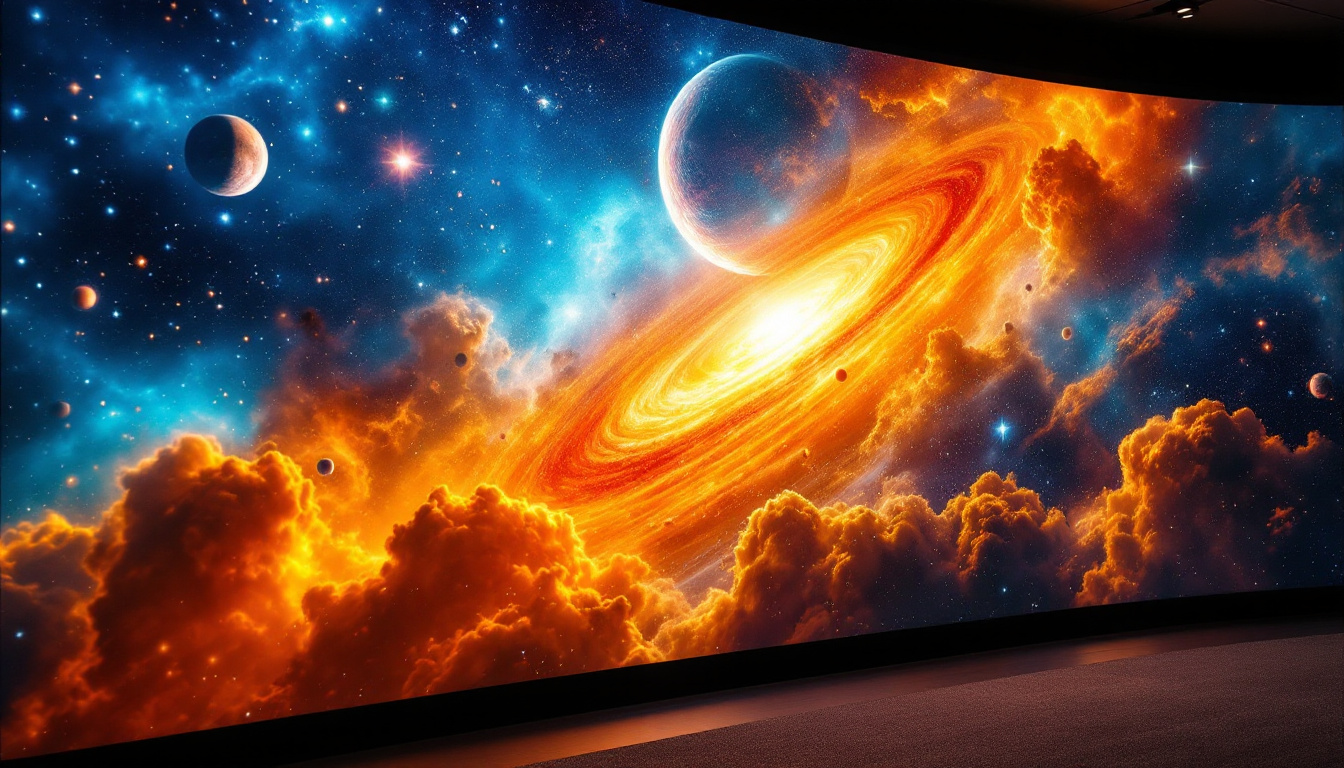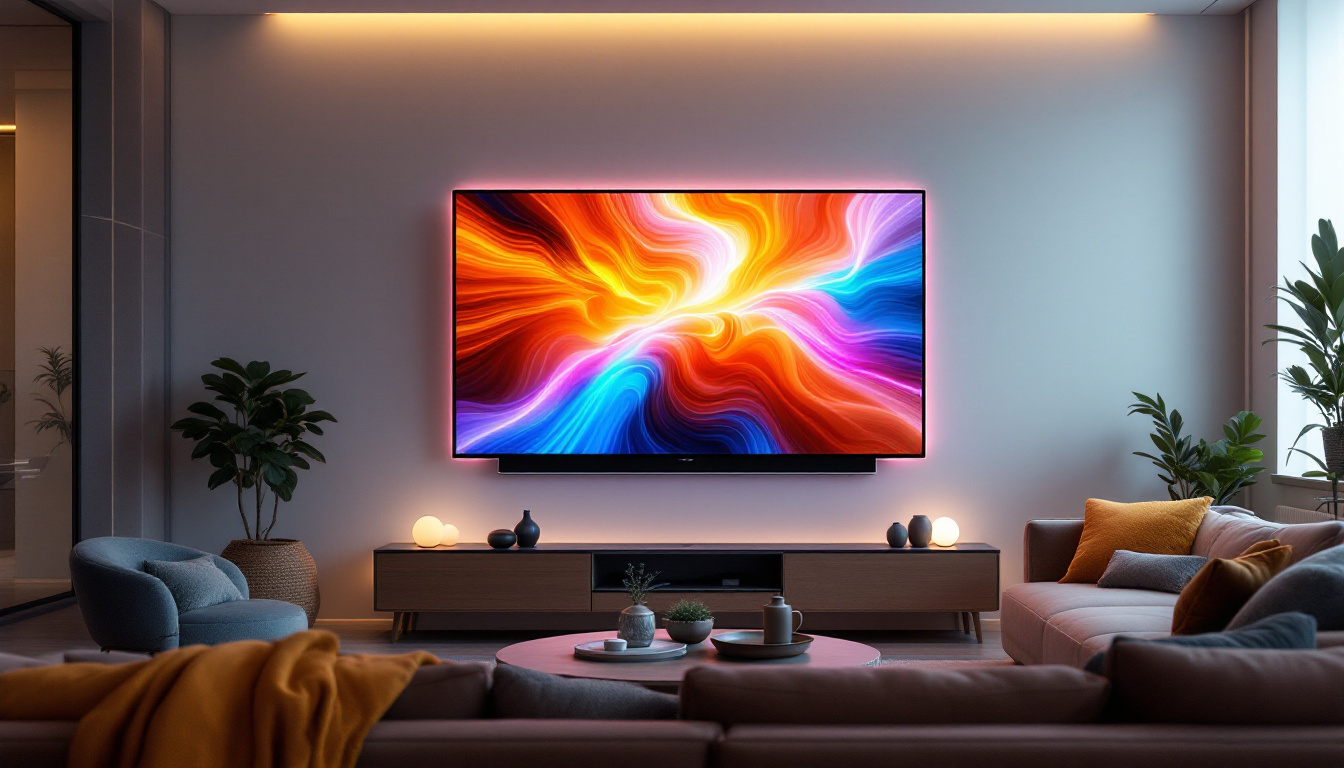The world of display technology has evolved significantly over the past few decades, with various innovations enhancing the visual experience for users. Among these advancements, the Active Matrix Liquid Crystal Display (AMLCD) stands out as a pivotal technology, particularly in the realm of LED displays. This article delves into the intricacies of AMLCD, exploring its functionality, advantages, and applications, while also comparing it to other display technologies.
Understanding Active Matrix Technology
Active Matrix technology is a method of controlling the pixels in a display screen, which is crucial for producing high-quality images. In contrast to Passive Matrix displays, which utilize a simpler grid system, Active Matrix employs a more complex arrangement that allows for faster refresh rates and better image quality. This technology has become the standard in modern displays, including smartphones, tablets, and televisions, due to its ability to deliver crisp visuals and responsive touch capabilities.
How Active Matrix Works
At the core of Active Matrix technology is the use of thin-film transistors (TFTs). Each pixel in an Active Matrix display is connected to a transistor that controls its individual state. This allows for precise control over the amount of light that passes through each pixel, resulting in sharper images and more vibrant colors. The ability to manipulate each pixel independently is what sets Active Matrix apart, enabling a level of detail and clarity that is particularly beneficial for high-definition content.
The arrangement of these transistors in a grid allows for the rapid switching of pixels, which is essential for displaying video content and fast-moving images. This is a significant advantage over Passive Matrix displays, where the slower response times can lead to motion blur and ghosting effects. Additionally, the technology supports higher resolutions, making it ideal for applications that require detailed graphics, such as gaming and graphic design.
Components of an Active Matrix Display
An Active Matrix Liquid Crystal Display comprises several key components that work together to produce images. These include:
- Liquid Crystal Layer: This layer contains liquid crystals that can be manipulated by electric fields to control light passage.
- Thin-Film Transistors: These transistors act as switches for each pixel, allowing for precise control and quick response times.
- Backlight: Typically provided by LEDs, the backlight illuminates the liquid crystals, enabling the display to produce visible images.
Each of these components plays a crucial role in ensuring that the display functions efficiently, providing users with a high-quality visual experience. Moreover, advancements in Active Matrix technology have led to the development of OLED (Organic Light Emitting Diode) displays, which eliminate the need for a backlight altogether. This results in deeper blacks and improved contrast ratios, further enhancing the viewing experience. The integration of these components also allows for thinner and lighter display designs, making them more portable and aesthetically pleasing.
Furthermore, the versatility of Active Matrix technology extends beyond just visual displays. It is also being utilized in touch-sensitive screens, where the precise control of pixels is essential for accurate touch response. This has revolutionized the way users interact with devices, allowing for multi-touch capabilities and gestures that enhance usability. As technology continues to evolve, the potential applications of Active Matrix displays are expanding, paving the way for innovative uses in various fields, from medical imaging to automotive displays.
Advantages of Active Matrix Liquid Crystal Displays
Active Matrix Liquid Crystal Displays offer several advantages that make them a popular choice for various applications, from smartphones to large-screen televisions. Understanding these benefits can help consumers make informed decisions when selecting display technologies.
Superior Image Quality
One of the most significant advantages of AMLCDs is their superior image quality. The precise control offered by the thin-film transistors allows for better color accuracy and contrast ratios. This results in images that are not only sharper but also more vibrant, making them ideal for applications where visual fidelity is paramount. Furthermore, the wide viewing angles provided by AMLCDs ensure that colors remain consistent and true-to-life, even when viewed from the side. This characteristic is particularly advantageous for group viewing scenarios, such as watching movies or playing games with friends, where everyone can enjoy the same high-quality visuals without distortion.
Faster Refresh Rates
Active Matrix displays can refresh their images much faster than their Passive Matrix counterparts. This capability is particularly important for video playback and gaming, where fast-moving images are common. The quick response times help to reduce motion blur, providing a smoother viewing experience. Additionally, the enhanced refresh rates contribute to a more immersive experience in virtual reality applications, where lag can detract from the sense of presence. As technology continues to advance, the demand for displays that can keep up with high frame rates in gaming and cinematic experiences only grows, making AMLCDs a forward-thinking choice for consumers.
Energy Efficiency
Another notable advantage of AMLCD technology is its energy efficiency. The ability to control individual pixels means that less power is consumed when displaying darker images. This efficiency is particularly beneficial in portable devices, where battery life is a critical concern. Moreover, the reduced energy consumption not only extends the lifespan of devices but also contributes to a lower carbon footprint, appealing to environmentally conscious consumers. As manufacturers increasingly prioritize sustainability, the energy-efficient nature of AMLCDs positions them as a responsible choice for modern technology users. In addition, advancements in backlighting technology, such as LED integration, further enhance the energy-saving capabilities of these displays, making them even more attractive for a wide range of applications.
Applications of Active Matrix Liquid Crystal Displays
The versatility of Active Matrix Liquid Crystal Displays has led to their widespread adoption across various industries. From consumer electronics to medical devices, AMLCDs are integral to many modern technologies.
Consumer Electronics
In the realm of consumer electronics, AMLCDs are ubiquitous. They are commonly found in smartphones, tablets, laptops, and televisions. The demand for high-resolution displays has driven manufacturers to adopt Active Matrix technology, ensuring that users enjoy crisp and vibrant visuals.
Medical Imaging
In medical settings, Active Matrix displays are used in imaging devices such as ultrasound machines and MRI scanners. The high resolution and color accuracy of AMLCDs are crucial for accurately diagnosing medical conditions, making them an essential tool for healthcare professionals.
Automotive Displays
Active Matrix technology has also made its way into the automotive industry. Many modern vehicles are equipped with sophisticated dashboards and infotainment systems that utilize AMLCDs. These displays provide drivers with critical information in a clear and visually appealing manner, enhancing the overall driving experience.
Comparing Active Matrix with Other Display Technologies
While Active Matrix Liquid Crystal Displays offer numerous advantages, it is essential to compare them with other display technologies to understand their unique position in the market.
Passive Matrix Displays
Passive Matrix displays are simpler and less expensive than their Active Matrix counterparts. However, they suffer from slower response times and poorer image quality. The grid-based control system of Passive Matrix displays limits their ability to produce sharp images and vibrant colors, making them less suitable for applications that require high visual fidelity.
Organic Light Emitting Diodes (OLED)
OLED technology is another competitor in the display market. Unlike AMLCDs, OLED displays do not require a backlight, as each pixel emits its own light. This results in deeper blacks and higher contrast ratios. However, OLEDs can be more expensive to produce and may suffer from burn-in issues over time. The choice between AMLCD and OLED often comes down to specific use cases and budget considerations.
Quantum Dot Displays
Quantum Dot technology enhances the color performance of LCDs by using tiny semiconductor particles to produce more vibrant colors. When combined with Active Matrix technology, Quantum Dot displays can offer exceptional color accuracy and brightness. However, they can also come at a higher price point, making them less accessible for some consumers.
The Future of Active Matrix Liquid Crystal Displays
As technology continues to advance, the future of Active Matrix Liquid Crystal Displays looks promising. Innovations in materials and manufacturing processes are likely to enhance their performance even further, making them an attractive option for a wide range of applications.
Improvements in Resolution
With the increasing demand for higher resolution displays, manufacturers are continuously working on improving the pixel density of AMLCDs. This trend is evident in the rise of 4K and 8K displays, which offer stunning clarity and detail. As technology progresses, it is expected that even higher resolutions will become standard in consumer electronics.
Integration with Smart Technologies
As smart technology becomes more prevalent, the integration of Active Matrix displays with IoT devices and smart home systems is likely to increase. This could lead to more interactive and user-friendly interfaces, enhancing the overall user experience.
Sustainability Initiatives
With growing concerns about environmental sustainability, manufacturers are also focusing on developing more eco-friendly display technologies. This includes reducing the energy consumption of AMLCDs and using recyclable materials in their production. Such initiatives will not only benefit the environment but also appeal to environmentally conscious consumers.
Conclusion
Active Matrix Liquid Crystal Displays have established themselves as a cornerstone of modern display technology. Their ability to deliver superior image quality, faster refresh rates, and energy efficiency makes them an ideal choice for a wide range of applications. As advancements continue to shape the future of display technologies, AMLCDs will likely remain a vital component in the ever-evolving landscape of visual media.
With their versatility and performance, Active Matrix displays are poised to meet the demands of future technologies, ensuring that users enjoy an unparalleled visual experience across various platforms. Whether in consumer electronics, medical imaging, or automotive applications, the impact of Active Matrix Liquid Crystal Displays will undoubtedly continue to grow in significance.
Discover LumenMatrix’s Advanced LED Display Solutions
As you’ve seen, Active Matrix Liquid Crystal Displays are integral to delivering high-quality visuals in today’s digital world. If you’re inspired by the potential of AMLCDs and want to explore cutting-edge LED display solutions that bring your content to life, look no further than LumenMatrix. Our comprehensive range of products, from Indoor and Outdoor LED Walls to Custom and All-in-One LED Displays, is designed to meet the diverse needs of any application. Elevate your visual experience and engage your audience like never before. Check out LumenMatrix LED Display Solutions today and see the difference innovation can make.































